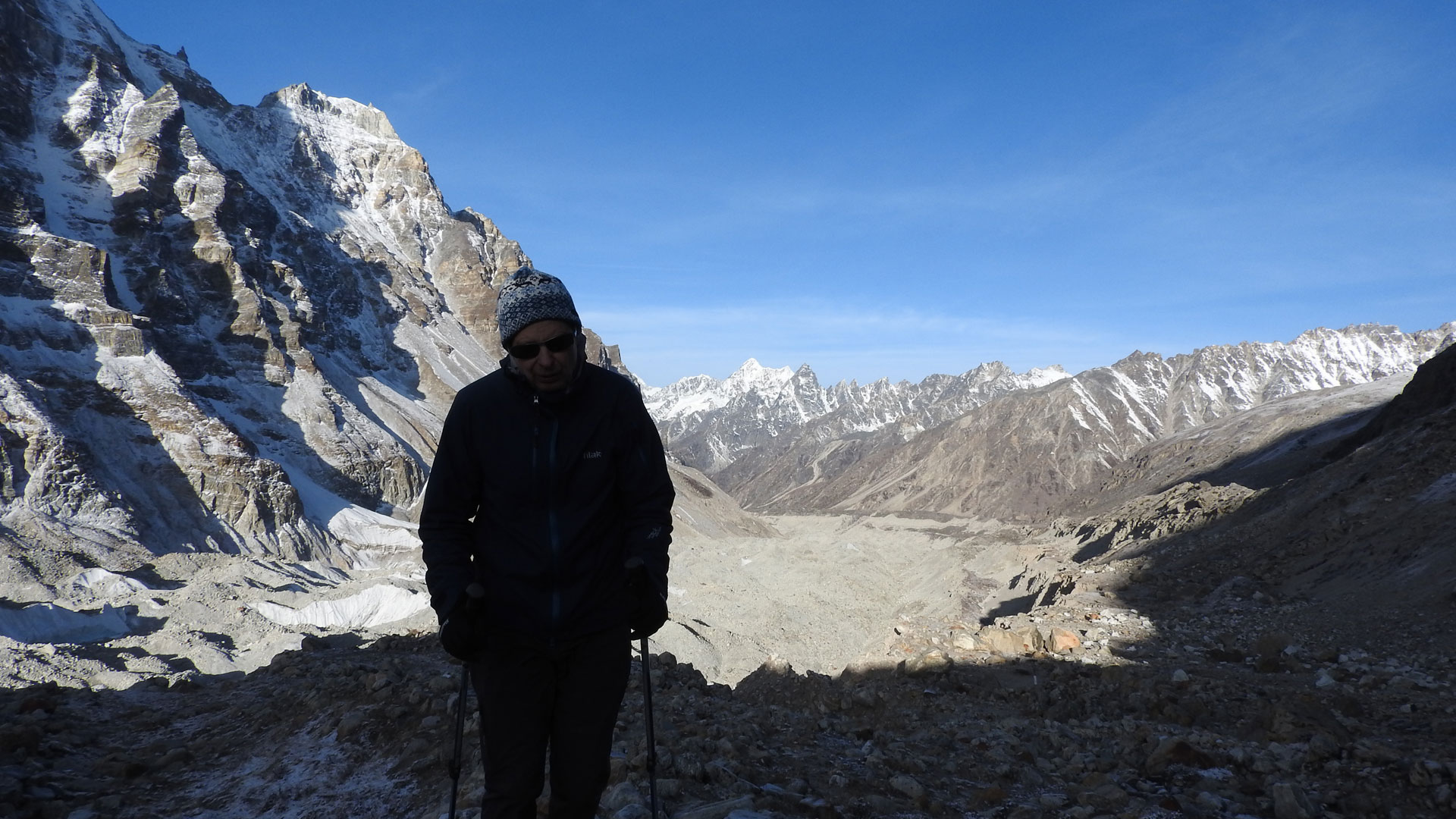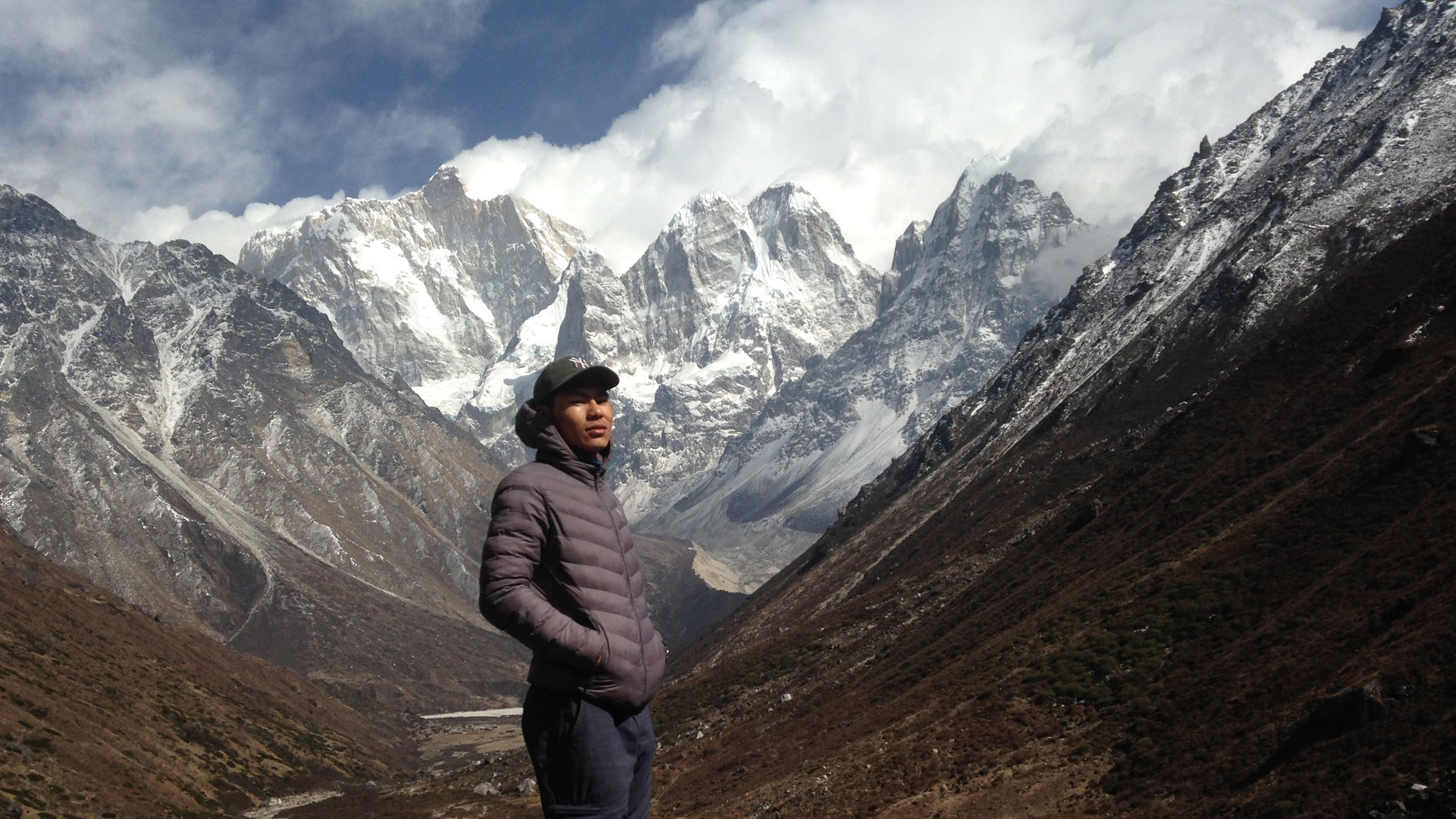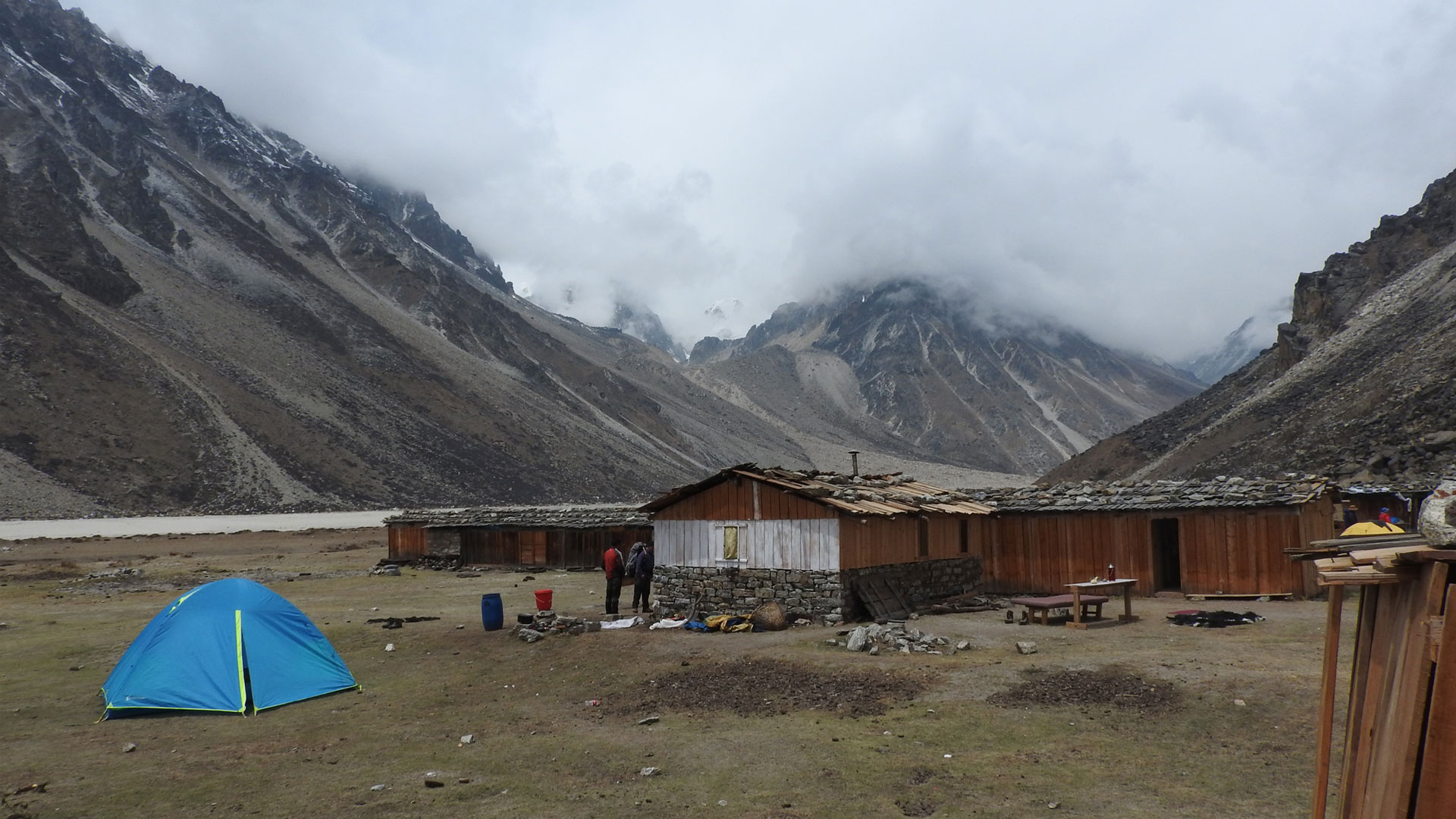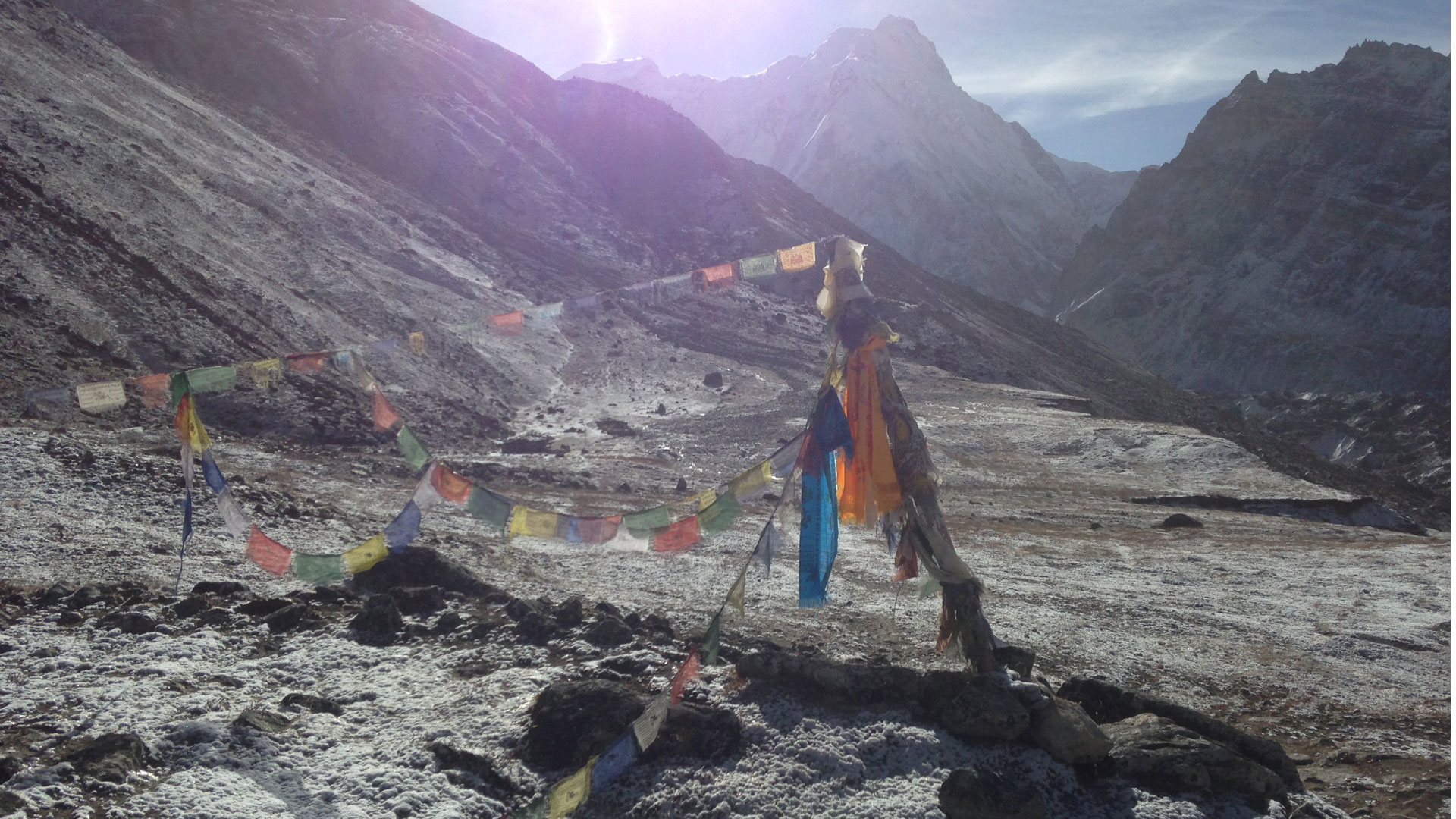The Kanchenjunga Trek takes you to one of the most remote and breathtaking regions of Nepal, where you’ll experience the natural beauty of the world’s third-highest peak, Mt. Kanchenjunga (8,586 meters). Located in the far eastern part of Nepal, bordering India and Tibet, the trek is a journey into the heart of the Himalayas, with pristine landscapes, diverse flora and fauna, and the majestic mountain peaks of the Kanchenjunga range.
This trek is one of the finest trails in the Nepalese Himalayas, offering a mix of rich culture, stunning geography, and challenging terrain. The Kanchenjunga Base Camp region remains largely unexplored due to its remote location, with far fewer visitors compared to more popular trails like the Annapurna Base Camp (ABC) or Everest Base Camp (EBC). As a result, trekkers are rewarded with a feeling of isolation, surrounded by nature in its most untouched form.
Over the course of 18 days, trekkers will journey through valleys, forests, rivers, waterfalls, and lush meadows while witnessing stunning views of the Kanchenjunga range and numerous other peaks. The trek reaches both the northern and southern base camps, with landmarks like the Faktanglung Himal and the Selele and Pangpema Passes (4,290m and 5,143m, respectively) offering some of the most awe-inspiring views. The route will challenge trekkers with steep ascents, high-altitude passes, and dramatic landscapes, while providing unforgettable panoramic views of Mt. Kanchenjunga, Kumbhakarna, Kambache, Kirat Chuli, Jongsang, and many more.
The trek’s rugged terrain and high passes, combined with the remote nature of the area, make it suitable for experienced trekkers with a strong sense of adventure. The itinerary is carefully designed to allow proper acclimatization as trekkers ascend to higher altitudes, minimizing the risk of altitude sickness.
Your journey begins with a scenic 45-minute flight from Kathmandu to Bhadrapur, followed by an 8-9 hour drive to Taplejung, the starting point of the trek. The trek will take you through cultivated foothills, rhododendron forests, and yak pastures as you approach the base camps. Along the way, you’ll also experience the rich cultural heritage of eastern Nepal, interacting with the Rai and Limbu ethnic groups, whose villages are scattered along the route.
The Kanchenjunga range itself is a hub of geological wonder, with five major glacier systems, two of which flow into Nepal, forming the mighty Tamor River. The southern side of Kanchenjunga, with its Yalung Glacier, offers a particularly captivating sight as trekkers cross high passes and descend through picturesque valleys.
For those seeking adventure, solitude, and a journey into the heart of Nepal's natural splendor, the Kanchenjunga Trek provides an unparalleled experience. Expect breathtaking views, cultural immersion, and a challenging yet rewarding journey into one of the most pristine regions of the Himalayas.
Trek Highlights:
Mt. Kanchenjunga Views: The trek offers unparalleled views of the majestic Kanchenjunga (8,586m), the world’s third-highest peak. You’ll also get breathtaking views of other towering peaks such as Kumbhakarna, Kambache, Jongsang, Kabru, and Kirat Chuli.
Base Camp Experience: Visit both the northern and southern base camps of Kanchenjunga, including the remote and stunning Pangpema Base Camp (5,143m) and the South Base Camp, which are known for their spectacular vistas and tranquil, isolated settings.
Pristine Wilderness: The region is one of the least-visited trekking areas in Nepal, offering a more remote and untouched experience compared to other trekking routes like ABC and EBC. Expect to walk through dense forests, yak pastures, rivers, waterfalls, and meadows.
High-Altitude Passes: Traverse two high-altitude passes—Selele Pass (4,290m) and the challenging Pangpema Pass (5,143m)—that offer jaw-dropping panoramic views of the surrounding peaks and glaciers, including the Yalung Glacier and Kanchenjunga’s southern face.
Cultural Immersion: Experience the rich culture of eastern Nepal, interacting with the Rai and Limbu ethnic communities. You’ll have the opportunity to learn about their unique customs, religious practices, and traditions.
Wildlife and Flora: The trek passes through diverse ecosystems, providing opportunities to see various species of birds, animals, and vibrant flora, including rhododendron forests, alpine meadows, and dense jungles.
Best Time to Trek:
The best months for the Kanchenjunga Trek are during the spring (March to May) and autumn (September to November) seasons.
Spring (March to May): During spring, the weather is stable, and the landscapes are lush and vibrant with blooming rhododendrons and wildflowers. The temperatures are moderate, making it ideal for trekking.
Autumn (September to November): Autumn offers clear skies and excellent visibility of the mountains. This season has mild temperatures, with less chance of rain, making it one of the best times for trekking in the region.
Why Choose the Kanchenjunga Trek?
Off-the-Beaten-Path Adventure: Unlike more popular treks, the Kanchenjunga region remains relatively untouched, offering a sense of solitude and intimacy with nature. It's ideal for trekkers looking for a challenging and remote adventure away from the crowds.
Immersive Cultural Experience: The Kanchenjunga trek takes you through villages where you’ll interact with the local Rai and Limbu communities. You’ll learn about their distinct cultural practices, traditional ways of life, and religious rituals, offering an authentic insight into rural Nepali life.
Unmatched Natural Beauty: The trek offers breathtaking views of not just Kanchenjunga but also other towering peaks, glaciers, and valleys that are rarely seen by trekkers. The diversity of landscapes—from dense forests to alpine meadows and glaciers—ensures that each day offers a new and unforgettable experience.
Challenging Yet Rewarding: For trekkers who enjoy a physically demanding challenge, the Kanchenjunga Trek provides steep ascents, high-altitude passes, and diverse terrain that will push you to your limits. The reward is the stunning scenery, cultural encounters, and sense of accomplishment at the end of the journey.
Off-the-Grid Experience: Unlike the more commercialized trekking routes, the Kanchenjunga region offers a sense of peaceful isolation. With fewer tourists, you can truly immerse yourself in the natural beauty and local culture without the distractions of crowded trails or teahouses.
Cultural Heritage Sites: Along the way, you’ll have the chance to visit various cultural and religious sites, including ancient monasteries, traditional temples, and local villages, making the trek not only an adventure but also a journey through Nepal’s rich cultural history.
Kanchenjunga Trek: Essential Details
Duration: The trek usually takes around 18 days, including acclimatization days. The trek itself involves 5-6 hours of walking per day on average, with some longer days depending on the altitude and trail conditions.
Trek Difficulty: This is a challenging trek, suitable for trekkers with previous trekking experience and good physical fitness. The high-altitude passes and steep terrain require stamina and determination, but the journey is incredibly rewarding.
Accommodation: The trek mainly involves staying in basic teahouses and lodges along the route, providing a comfortable but rustic experience. Facilities can be basic, but the hospitality and warmth of the local communities make for a cozy stay.
Accessibility: The trek begins with a 45-minute flight from Kathmandu to Bhadrapur, followed by a scenic 8-9 hour drive to Taplejung, the starting point of the trek.
Permits: The trek requires the Kanchenjunga Conservation Area Permit (KCAP) and the TIMS (Trekkers’ Information Management System) Card. These can be obtained in Kathmandu.
For those seeking a truly unique, off-the-beaten-path trekking experience, the Kanchenjunga Trek is an unforgettable journey through one of Nepal’s most remote and spectacular regions. From its awe-inspiring mountain views and high-altitude passes to its rich cultural heritage and pristine wilderness, the Kanchenjunga Trek offers a blend of adventure, beauty, and cultural immersion that is hard to find anywhere else in the world.
Key Highlights of this Trip
-
Scenic flight to Bhadrapur which offers a stunning views of Himalayas including Mt. Everest
-
Walking through Yalung glacier
-
Visit UNESCO World Heritage Site and exploring its different aspects
-
Exploring less traversed mountain region in Nepal
-
Diverse geographical landscapes, flora and fauna
-
Jaw dropping views of Mt. Kanchenjunga and its subsidiary peaks around




